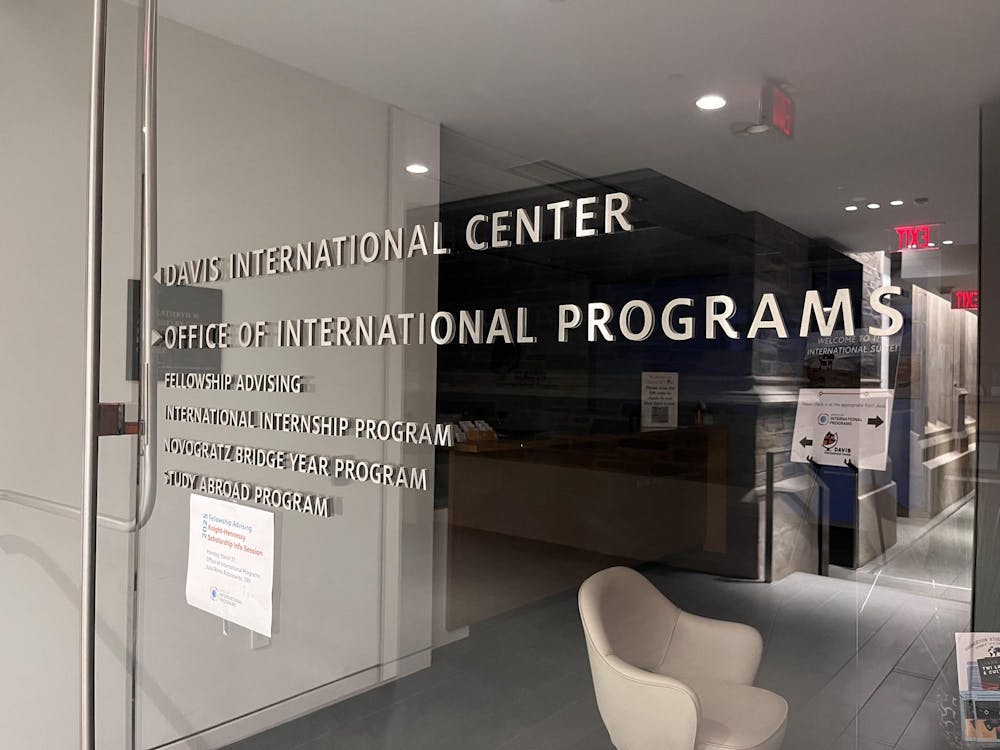Homosexuality has a biological correlate even if the particular genes have not yet been confirmed, University of Illinois at Chicago psychiatry professor Brian Mustanski said Tuesday in his lecture, "Is there a gay gene?"
Mustanski's address, which preceded today's official opening of the LGBT Center, presented results from a variety of studies — including his own — that point toward a genetic influence on homosexuality.
"Each older brother increased the odds [of homosexuality] by about 33 percent to 48 percent, which is a pretty large effect," Mustanski said, referring to earlier studies that examined the relationship between homosexuality and the number of older siblings. Mustanski also explained another study that found a genetic link on the chromosomal location Xq28. On average, brothers share 50 percent of their genes, but in 40 pairs of gay brothers, 80 percent shared the Xq28 region, he said. A later study found only a 64 to 68 percent match, though the correlation is still significant.
Research has not been able to pinpoint or confirm the existence of a particular gay gene, however, so the issue remains complicated.
"If you're going to study something like sexual orientation, your research is only as good as your understanding of its factors," Mustanski said. "The moral of the story is that whatever is going on in Xq28 is very complex."
Just determining a person's sexuality can be difficult. Mustanski and other researchers use the Kinsey Scale, which factors in attraction, fantasy, behavior and self-identification on scales of one to six.
Mustanski's own study, recently published in the biomedical journal Human Genetics, was "the first to involve a genome-wide scan of male sexual orientation" and found three new chromosomal regions that correlate with homosexuality, he said.
But he recommended further study of female sexual orientation to clarify and build upon these results.

"Most men are primarily heterosexual or primarily homosexual," but data for women was scattered across the Kinsey scale, Mustanski said. "Homosexuality is probably a very different thing in women [than] it is in men."
Besides genetics, researchers have focused on a variety of factors in an effort to understand homosexuality, Mustanski said. They have examined fingerprint patterns, hypothalamus size, the size differential between the second and fourth digit of the hand, pheromones and even the sexuality of sheep.
"Interestingly, about five to 10 percent of male sheep, rams, prefer to mount other male rams ... and really can't be bothered with the female ones," Mustanski said.
Researchers at Northwestern University are currently assembling the largest ever study of gay siblings to conduct what could be the "definitive study" to determine whether or not there is a gay gene.

In future research, Mustanski suggested following up on such studies as well as conducting others related to female sexuality and the involvement of genes in the development of sexual orientation. He also emphasized creating theories that can be empirically tested.
But all this research will require funding.
"It's difficult under this climate to get a lot of different research done, but especially any research on sexuality," Mustanski said. For his own study, he "had a very difficult time getting that funding."
"It's a game, I guess, in some ways, having to deal with that," he added. But it's a game Mustanski said he will continue to play, for the "about three percent of men [who] would say that they are gay if you do a telephone survey."







